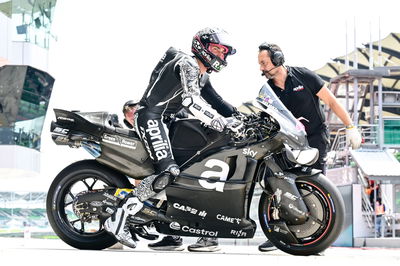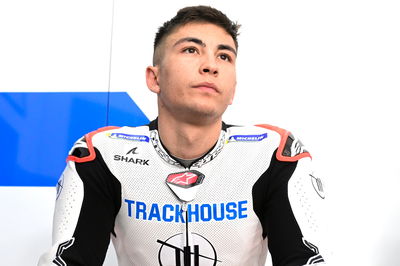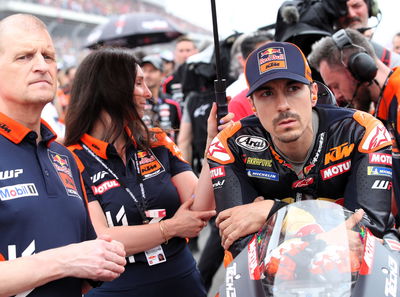Aleix: Aprilia’s aerodynamic department “one of the best - but makes our lives difficult!”
Aleix Espargaro reveals the range of new aerodynamics to be tested for the Aprilia RS-GP.

Aleix Espargaro is proud of the job done by Aprilia’s aerodynamics department but admits “it makes our lives a bit difficult!”
That’s because in addition to the usual new parts a factory MotoGP team would test before each season, they now also have a range of aerodynamic combinations to work through.
In Aprilia’s case, Espargaro estimates he has five different major aero developments to try on the new RS-GP at this week’s official Sepang test.
“We still need more days because the 24 bike has many combinations with the aerodynamics,” Espargaro said after setting the 13th fastest lap time, +0.787s, during 54 laps.
The ’24 bike is an evolution, [but] the aerodynamics can make a big, big difference.
“We need to understand which is the best parts because we have two completely different wings, which have a lot more downforce in the front.
“We have three different combinations in the rear, with big wings.
“We also have new items on the swingarm which I didn’t try.
“We need to try a lot the combinations of each because they completely change the bike. it (either) makes the bike really heavy, or gives you stability, with some you lose in the brakes, others you gain in the brakes.
“It’s not easy to understand the best combination.”
Although Ducati pioneered MotoGP's current aerodynamic era, the Aprilia is now seen as among the most aerodynamically advanced bikes on the grid.
The factory's latest Batmobile-style bodywork, including a sculpted rear seat unit and side panels, is one the most eye-catching developments of the Sepang test.
Meanwhile, the RS-GP's new (square) rear wing is expected to be seen on day two.
“At the beginning, we didn’t realise how important the aerodynamics are but in these last 4 or 5 seasons we understand how the aerodynamics can change the behaviour of the bike,” Espargaro confirmed.
“I think we have one of the best departments of the MotoGP paddock in terms of the aerodynamics but obviously it makes our lives a bit difficult!
“Because it’s like before they might have given you 5 engines, 5 chassis, 5 swingarms… but you never had 5. Right now, we have 5 [options] in terms of aerodynamics.
“To find the right combination you have 3 or 4 on the front, 3 or 4 on the rear, 2 different side wings, wings in the swingarm.
“Engineers try different settings but you as a rider need to understand which is the package you like the most and adapting your riding style. It's very difficult.”
Unfortunately for Espargaro and the other RS-GP riders, the new bodywork doesn’t make the bike any cooler. Instead, an in-season update will aim to improve ventilation before the hot and humid flyaways in Thailand, Malaysia, India and Sepang.
“The engineers told me they knew [the temperature on the bike] would be the same," Espargaro explained. "The idea is that the second homologation of the aerodynamics that we’re going to receive later in the year is going to be much better, because it’s when we’re going to race in Asia so it’s where you suffer the most.
“But this aerodynamic is exactly the same [temperature]. I’ve been the only one out of the three [of us] to test it in the maximum heat and I was not able to do more than 4 or 5 laps.”
Team-mate Maverick Vinales was the fastest Aprilia rider on day one in sixth place.












